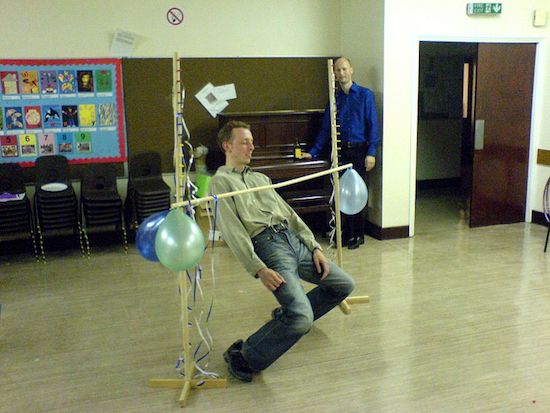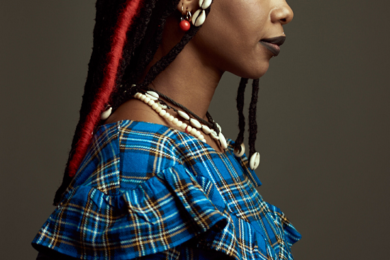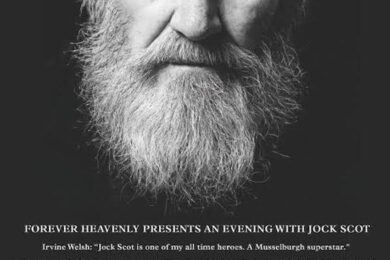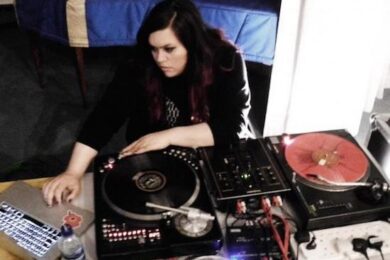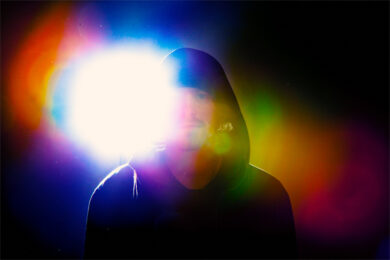image: Limbo Dancer attempting a lowered pole by Mariegriffiths at English Wikipedia
So. Limbo is the lobby next to the hereafter’s elevator banks. It’s that feeling in the dentist’s waiting room when you don’t know if your destiny lays up Satan’s root canal or ends with a bright white smile. It scales from the minor anxious withdrawal brought about by a broken smartphone device to serious time spent between jobs, and the months, years, letting a past relationship fade so that another can take colour. Limbo is a videogame, pulp fiction, a self-aggrandizing surrealist’s literary fantasy. It’s a way to describe modernist fantasies of cool affect. If you visit Vermont it’s hopped-up pop in a bottle. For Karl it was a near-death experience on the ocean. It’s also one of the most famous and saddest dances in the world.
You might not think it, listening to the spry sounds that made the limbo dance a global craze in the early 1960s. Songs by Frankie Anderson, Lord Melody, Denzil Laing and the Wrigglers, Mighty Wrangler, Lord Tickler and the Jamaican Calypsonians, The Trinidad Serenaders. At the height of the craze, between 1960 and ’63, Bo Diddley, Duane Eddy, Duke Ellington, and James Brown all recorded limbo songs but it was rock’n’roller Chubby Checker who hit gold with Limbo Rock in ’62. ‘Jack be nimble, Jack be quick, Jack go under limbo stick.’ You know the moves. Dancers bend backwards at the waist and knees, shuttling forward under an horizontal bar, which is gradually lowered with each round, eliminating those who can’t make it underneath without hitting the stick, falling backwards or using their arms to stay balanced. The greatest limbo dancer of all time was said to be Julia Edwards, ‘The First Lady of Limbo’. She and her dance troupe were recruited in 1957 to perform in the Robert Mitchum and Rita Hayworth drama Fire Down Below. Later, Edwards was credited with creating the ‘flaming limbo’ in which the dance bar is set on fire.
Limbo, traditionally performed to calypso – a music of encoded satire and social commentary – originated as a funeral dance at wakes in Trinidad and Tobago during the mid-1800s. A dance of death and survival, limbo is said to have emerged during the Middle Passage on slave-ships transporting their tragic cargo from Africa to the Americas. These were vessels designed like battery farms for packing bodies and maximizing profits. Captives were chained to the slave cutters in cramped, airless decks in which they could not stand upright. Recordings of Edward Kamau Brathwaite reading his 1973 poem Caliban capture the poet staining a gentle calypso-style melody with violence: ‘Limbo / limbo like me / stick is the whip / and the dark deck is slavery.’
In 1962, limbo star Roz Croney released an album titled How Low Can You Go? The session band drafted in to back her was led by jazz musician Sun Ra, with four members of his Arkestra – Marshall Allen, John Gilmore, Ronnie Boykins and Pat Patrick. The music is upbeat but unhurried; loose, layered percussion kept in check by tight-strummed rhythm guitar, and charmed by friendly brass and reeds. Croney’s voice is party-confident, complemented by backing chants that glow with spacey reverb. Those were the voices of Ra and his Arkestra. The same year they played on Croney’s limbo record, they recorded the albums Cosmic Tones for Mental Therapy and When Sun Comes Out. Slow, exploratory, cosmic jams. Galactic be-bop. Through his music and aesthetics, Ra was at that point developing a fusion of science fiction, ancient history and Afrocentric narratives with which to re-imagine black identity. (Mark Dery later dubbed this ‘Afrofuturism’.) His music spoke of space travel, interstellar exile and futuristic technologies, of life on Saturn and Venus. Ra’s music unfolded itself from be-bop and loosened in form. The Arkestra grew batteries of percussion and synthesizers, expanding them further using tape delay effects. They performed in multicoloured robes, psychedelic styles derived from Egyptian pharaohs and African royalty. Ra’s purpose was to reflect on the African-American experience, allegorizing the slave ships of the Middle Passage as alien motherships and black people as captive extraterrestrials.

Wilson Harris, writing in History, Fable and Myth in the Caribbean and Guianas in 1970, saw the dance as ‘the limbo gateway between Africa and the Caribbean’, an interzone of suffering, a literal sea-change in circumstances. It borrows from the Christian idea of limbo as an intermediate space between punishment or salvation. Limbo stands for the Middle Passage but Harris suggests it could equally apply to other mass displacements of people. Harris understood the limbo dance as an endurance that risks death as the dancers bend to pass under the pole, followed by celebration as they stand up, having survived their turn, only to face danger again on the next round. How low can you go? How much suffering can you take? In this sense, the Arkestra’s session work with Croney could be a concealed Afrofuturist message, bearing more political weight than a novelty dance record might initially seem to be able to hold.
Recalling dances he saw as a boy in Georgetown, British Guiana, in the 1930s, Harris describes performers imitating spiders or moving on stilts, and he teases the word ‘limbo’ into the metaphor of the phantom limb, a part of the body which has been lost but can still be felt, imagined to be in use, even as the amputee simultaneously accepts their leg or arm has gone. ‘The refusal of an experience to enter into the past,’ as Elizabeth Grosz puts it in Volatile Bodies. For Harris, the phantom limb is ‘the re-assembly of dismembered man or god’. It is syncretic, possessing ‘archetypal resonances that embrace Egyptian Osiris, the resurrected Christ and the many-armed goddess of India, Kali, who throws a psychical bridge with her many arms from destruction to creation.’ But the phantom limb is not simply a stand-in for a lost Africa, and limbo is more than a symbolic suspension between a homeland that cannot be returned to and new circumstances too hard for adjustment. ‘Limbo was rather the renascence of a new corpus of sensibility that could translate and accommodate African and other legacies within a new architecture of cultures.’ Limbo was a space of productive uncertainty, an opportunity to world-build. To borrow from Ra: ‘Somebody else’s idea of somebody else’s world is not my idea of things as they are. Somebody else’s idea of things to come need not be the only way to vision the future.’
Limbo by Dan Fox is published by Fitzcarraldo Editions

